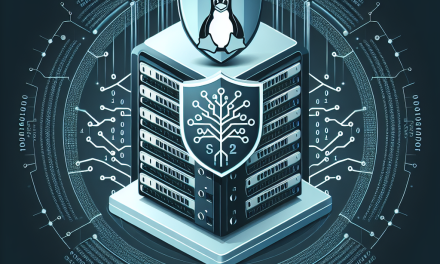As containerization continues to gain traction in the realm of application development and deployment, ensuring the security of container images has become a top priority for organizations. Vulnerabilities within container images can lead to significant security breaches, making it essential to implement effective scanning practices. In this comprehensive guide, we will explore how to scan container images for vulnerabilities on Linux servers, focusing on tools, techniques, and best practices.
Understanding Container Vulnerabilities
A container typically includes an application and all its dependencies packed together, allowing it to run consistently across various environments. However, insecure dependencies, outdated software, or misconfigurations can create vulnerabilities, exposing applications to security threats. Common vulnerabilities include:
- Outdated libraries and software components.
- Misconfigurations.
- Potentially harmful default settings.
- Lack of security patches.
Why Scan Container Images?
Scanning container images offers several benefits:
- Risk Mitigation: Identifying vulnerabilities early can prevent malicious attacks and data breaches.
- Compliance: Many industries require adherence to security standards and regulations.
- Reputation: A secure environment strengthens user trust, enhancing your organization’s reputation.
- Continuous Monitoring: Container images should be regularly scanned to stay ahead of newly identified vulnerabilities.
Tools for Scanning Container Images
Numerous tools can help scan container images for vulnerabilities. Here are some of the most popular options:
1. Clair
Clair is an open-source project from CoreOS that provides static analysis of container images. It scans images for known vulnerabilities using a vulnerability database and provides detailed reports.
Installation:
To install Clair on a Linux server, follow these steps:
bash
git clone https://github.com/coreos/clair.git
cd clair
make build
Configure Clair to point to your image repository and run the analysis.
2. Trivy
Trivy is a simple and comprehensive vulnerability scanner for containers and other artifacts. It identifies vulnerabilities in OS packages and application dependencies.
Installation:
To install Trivy, use the following commands:
bash
sudo apt-get install wget
wget https://github.com/aquasecurity/trivy/releases/latest/download/trivy_0.23.2_Linux-64bit.deb
sudo dpkg -i trivy_0.23.2_Linux-64bit.deb
Usage:
To scan a container image, run the following command:
bash
trivy image
3. Anchore Engine
Anchore Engine is an open-source tool that provides deep image inspection and policy evaluation. It can analyze container images to identify vulnerabilities, compliance issues, and best practices.
Installation:
Anchore can be installed in various ways, but using Docker Compose is the simplest.
bash
git clone https://github.com/anchore/anchore-engine.git
cd anchore-engine
docker-compose up
4. Sysdig Secure
Sysdig Secure is a commercial solution that offers advanced scanning capabilities, including runtime security and compliance. It provides robust vulnerability scanning reports and integrates seamlessly with CI/CD pipelines.
Performing Vulnerability Scans
Step 1: Pull Container Images
First, ensure that you have the necessary container images pulled onto your Linux server. Use Docker or any container runtime to download the images.
bash
docker pull
Step 2: Scan the Image
Using your preferred scanning tool, initiate the scan of the container image:
-
For Trivy:
bash
trivy image -
For Clair:
Configure the Clair service and use Clair’s API to analyze the image.
Step 3: Review the Results
Examine the output from the scan. The tool will typically list the vulnerabilities by severity level, allowing you to prioritize your remediation efforts. Look out for:
- CVSS Scores: This score indicates vulnerability severity (0-10 scale). Higher scores denote greater risk.
- Package Information: Information about the affected packages, including version numbers.
- Recommended Actions: Suggestions for mitigating or fixing the vulnerabilities.
Best Practices for Vulnerability Management
- Automate Scanning: Integrate automated scans into your CI/CD pipeline to catch vulnerabilities before they reach production.
- Regular Scanning: Schedule regular scans to track newly discovered vulnerabilities.
- Patch Management: Keep your container images updated with the latest patches and security updates.
- Use Minimal Base Images: Smaller base images reduce the attack surface and are generally more secure.
- Implement Security Policies: Establish security policies for your development and deployment processes, ensuring compliance with industry standards.
Conclusion
Scanning container images for vulnerabilities is an essential practice for maintaining the security of your applications on Linux servers. By integrating the right tools and adhering to best practices, organizations can significantly reduce their risk of security breaches. Stay vigilant and proactive in your security approach, and you’ll help safeguard your applications in the ever-evolving landscape of containerization.
By following this comprehensive guide, you’ll be better equipped to understand and implement effective vulnerability scanning for container images. For more tips and resources, stay tuned to the WafaTech Blog!





